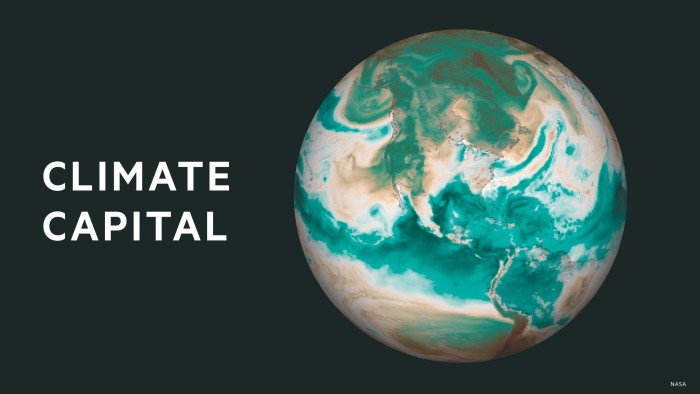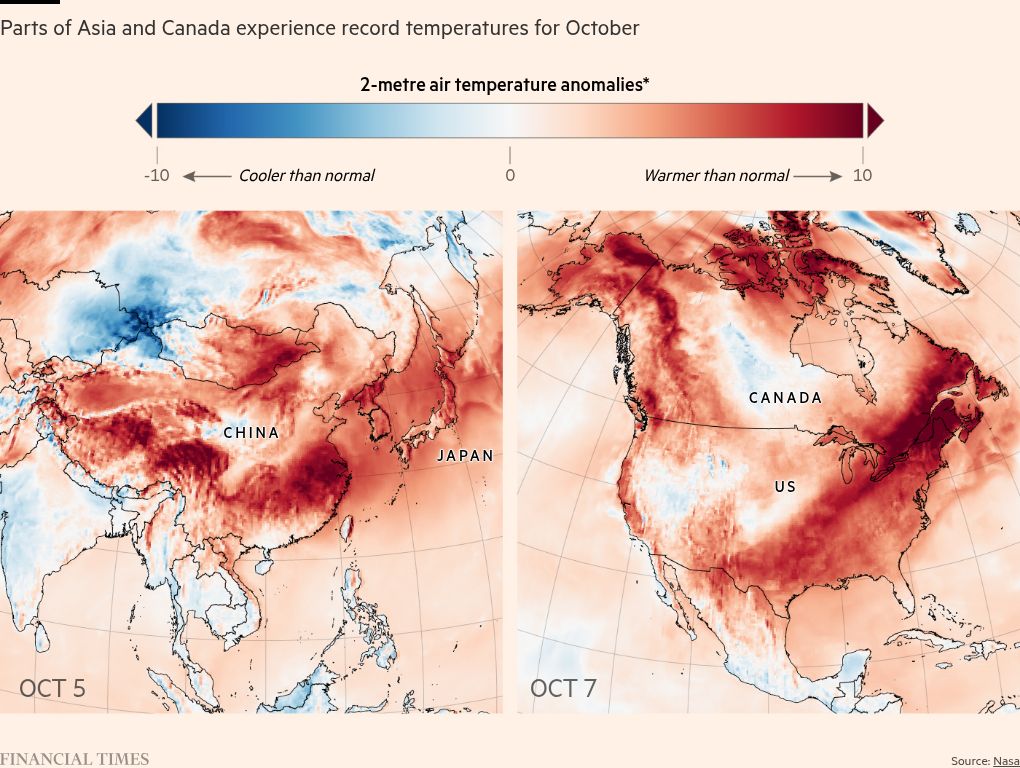Stay informed with free updates
Simply sign up to the Climate change myFT Digest — delivered directly to your inbox.
The world’s land and oceans recorded their third-highest average temperature on record for September, less than a tenth of a degree cooler than last year, with the trend showing the level rising back towards the peak.
While temperatures this year have been slightly below the records set in 2024 and 2023, the past two months are starting to trend back up towards the threshold of a rise of 1.5C since the industrial era set down in the 2015 Paris Agreement.
The EU’s Earth observation service Copernicus said the global average surface air temperature in September was 16.11C, 0.66C above the 1991-2020 average for September and 1.47C above the pre-industrial average.
Japan, China and the Korean peninsula have experienced record temperatures since the beginning of October.
In Japan, many locations reported temperatures of 34C and minimums greater than 28C, which are warmer than those reported in July, according to weather historian Maximiliano Herrera.
Seven stations in China broke or tied the highest October temperature record with Hengan and Chagshan reaching 39C. Sixty five stations also broke or tied the highest night temperature record.
Dozens of minimum temperature records for October have also been broken in Canada by margins of up to 4C, with temperatures in Nova Scotia nearing 30C, or more than 10C above the 1991-2020 average.
These raised temperatures are occurring during a neutral period for the natural cycle of the Pacific Ocean phenomenon, known by the acronym ENSO.
A strong El Niño warming cycle that developed during the second half of 2023, contributed to higher global temperatures.
El Niño is part of a natural fluctuation in the world’s climate system in which the trade winds that blow warm water west across the Pacific weaken, raising sea and land surface temperatures and affecting weather patterns around the world. It is generally followed by a reverse cooling cycle, or La Niña. El Niño typically occurs every two to seven years, with the most recent declared in June 2023.
In its latest monthly update, Copernicus also said much of the northern Pacific continued to experience above average sea surface temperatures, with the northeastern north Atlantic registering “much higher-than-average to record-high” levels.
In contrast, sea temperatures in central and eastern equatorial Pacific were close to or below the 1991-2020 average, reflecting the ENSO-neutral conditions. Part of the north Atlantic and western Indian Ocean including the Arabian Sea also registered cooler than average temperatures.
Climate Capital

Where climate change meets business, markets and politics. Explore the FT’s coverage here.
Are you curious about the FT’s environmental sustainability commitments? Find out more about our science-based targets here



